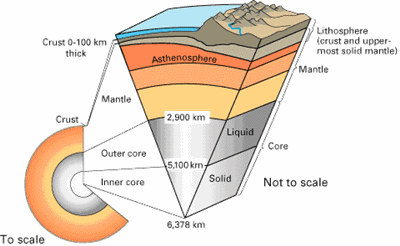 In studying a heavenly body, knowing the composition of the crust is not enough. Beneath the crust there lies the mantle, which is the intermediate zone of a planet located between the crust and the core. For example, the earth’s mantle is within 32 km to 2,900 km from its crust. The mantle makes up more than 80% of the planet’s total volume.
In studying a heavenly body, knowing the composition of the crust is not enough. Beneath the crust there lies the mantle, which is the intermediate zone of a planet located between the crust and the core. For example, the earth’s mantle is within 32 km to 2,900 km from its crust. The mantle makes up more than 80% of the planet’s total volume.
The Earth’s mantle can be further divided into two layers; the upper and the lower mantle. The lower layer is generally in semi-liquid state and due to the heat generated by the core, convention currents occur in the mantle where rock rises due to high temperature but then sinks again slowly as it cools down. This event drives the movement of the tectonic plates.
On the other hand, the upper layer of the mantle doesn’t experience convection. It also comprises the lithosphere’s lower part. In addition, the layers of the mantle also differ in the amount of seismic velocities and density. The denser lower mantle is indicated by generally lower seismic velocities.
Like the planet’s crust, the mantle of the Earth’s moon is also rocky, rich in silicate materials and also accounts for a big percentage (about 50%) of its total mass.
Earth's Mantle
